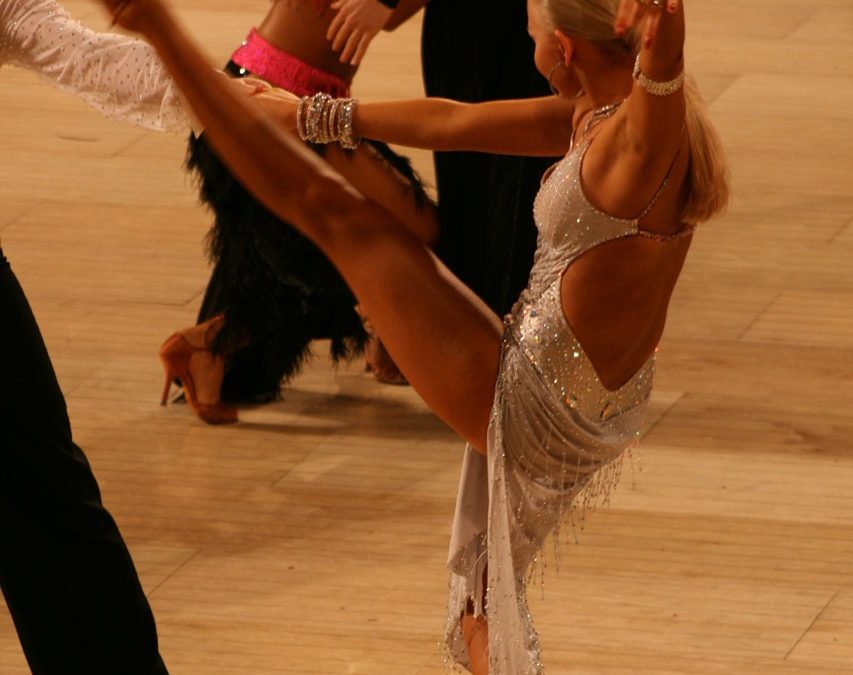
by PT-clc | Nov 29, 2017 | Coping with Change, Managing Change, Stress Management, Women in Business
In a recent post – https://pamela-thompson.com/art-change-framework-part-2/, I shared a three-phase model and process called the Transition Journey, and step two of the Art of Change Framework: Choose Your Dance. In Step Three of the Art of Change Framework: Feel the Rhythm and Learn the Steps, you commit to embracing change in your body rather than resisting it, and begin doing the work associated with the phase of the transition journey you are currently in.
To recap, there are three phases in a transition journey: They are:
- An Ending
- The Neutral Zone
- A New Beginning.
There are emotions and work associated with each phase. If you don’t do the work, you often keep repeating the same patterns in your life and remain unhappy and unfulfilled in life and in work.
An Ending is the end of a job/ relationship/ career. The main work of this phase is to “let go” of the old job/relationship/career and to celebrate the positive aspects and lessons learned from it.
“Letting go” is easier said than done. Here are some proven strategies for “letting go”.
- Identify and surface the emotions you have around a current or previous transition; for example, anger at a boss, a previous partner, a friend.
- Release those emotions from your body. When you think about a particular emotion notice any tension in your body and where it is located. It is often felt in your gut or your heart. Think of emotions associated with past hurts and transitions as “rocks in a backpack” and visualize and experience releasing them all from that backpack.
- Forgive yourself and others. This is powerful and often keeps us stuck and holds us back from moving forward. A mindfulness tool that facilitates forgiveness (of self and others) is “Forgiveness Meditation”. See https://www.youtube.com/watch?v=PbHKCy4f6Dk for a process developed by Jack Kornfield , a psychologist trained in Eastern and Western Psychology.
- Write a letter to your previous boss, partner, friend from a balanced and empathic perspective. There are always two sides to any story. Reflect on the lessons learned from the experience.
- If you still have anger and strong emotions associated with a past relationship, it is therapeutic to write a letter to that person sharing how they wounded you and what the experience was like from your perspective and then to either burn it ceremoniously or tear it up into small pieces and at the same time commit to releasing the negative emotions associated with the relationship.
In Phase 2, the Neutral Zone, you may feel stuck, angry, confused and uncertain of what to do next. This is the phase when we often second guess ourselves and question our actions. We may even return to the old job or relationship. The main work of this phase is “getting clear”. It provides an opportunity to envision the job or relationship of your dreams. Here are several ways to envision the relationship, career, or life of your dreams.
- Go to a quiet place, outside in nature if possible. Write down what you envision in the relationship of your dreams; e.g. someone who makes me laugh, loves being nature, is physically active, is a great communicator, … . It’s helpful to use the stem I see … and let the list flow out of you without overthinking it. Then imagine you have achieved your dream and imagine how you will feel when you have that special relationship and truly feel it in your body. It’s helpful to use the stem I feel … and write down those feelings; e.g. I feel happy, content, loved, valued … .
- Create a vision board from old magazines or digitally, e.g. using pinterest, of that relationship, career, life of your dreams. It is then important to look at your vision board ideally twice a day, in the morning on awakening and in the evening before retiring, and say to yourself I am so happy and grateful that[1] I’m living a life that includes … . While you’re doing this, feel the positive emotions in your body you will experience when you have achieved that dream relationship/career/life.
I can attest to the power of this process as 1.5 years after I left my husband of 24 years I wrote out all of the attributes I wanted in a significant other and in a relationship. Within 5 months of doing this I met my current partner and “soul mate”.
In Phase 3, the New Beginning, you take action on the vision you created during the “Neutral Zone”. This phase can be likened to a butterfly breaking out of its cocoon and can be a time of real transformation (if you’ve taken the time to learn and grow in the “Neutral Zone”). Think about how you felt when you launched your new business, were selected for that dream job, met the man of your dreams. These are the feelings associated with the New Beginning which fill us up and make us feel happy, healthy, confident and fulfilled.
If you don’t take the time to reflect, learn and grown in each phase, you may find that you keep recreating the same patterns in your life. If you want a life of joy, balance and fulfillment, it is helpful to understand the transition journey process and also to do the work to learn and grow in each phase.
Stay tuned for my next post where I’ll share the fourth step in the Art of Change Framework designed to help you embrace change and create the life of your dreams – one of clarity, confidence, health, happiness, fulfillment and inner peace.
Are you on a transition journey? Did you glean any new insights from this article? I welcome your questions and comments below. What strategies have you found helpful in embracing change?
[1] From Mary Morrissey and her Dream Builder Program – https://www.dreambuilderlive.com/

by PT-clc | Nov 14, 2017 | Change, Coping with Change, Creative Living
In a previous post I outlined a proven process for embracing change while at the same time making a positive impact in the world – https://pamela-thompson.com/strengthen-impact-world-dance-change/. In this article we will take a deep dive into the second step in this 5-step process: Choose Your Dance.
Many of us often feel like we are corks bobbing on the sea of life, particularly when challenges keep coming up in our personal and/or professional lives, and it seems like we keep repeating the same patterns again, and again and again and getting the same results. Believe it or not, we all have choice. When you realize this and become aware of patterns that are no longer serving you, you can examine those parts of yourself and make changes, whether it be in the type of partner you choose, or in the career or business direction you pursue.
In step two of the Art of Change Framework, you identify the transition or change you want to work on and where you are on your transition journey.
What do I mean by a transition journey?
Based on over 30 years of working with people and organizations, William Bridges identified a 3 – phase process that helps you understand, get unstuck and move forward regardless of the transition you are going through whether it be in your career, relationship, health … . The 3 phases are:
- An Ending
- The Neutral Zone
- A New Beginning[1]
In each phase there are opportunities to learn and grow. There are emotions associated with each phase that need to be acknowledged and released, and there is key work that needs to be done to get unstuck so that you can move forward.
An Ending is the end of a job/relationship/ career. The main work of this phase is to “let go” of the old job/relationship/career and to celebrate the positive aspects and lessons learned from it. Think about a transition you are current experiencing or one in the past that you still hold strong emotions around. What words and feelings come up for you? It could be anger, guilt, relief …
“Letting go” is easier said than done. In an upcoming post I will share some proven strategies for “letting go”.
In Phase 2, the Neutral Zone, you may feel stuck, angry, confused and uncertain of what to do next. This is the phase when we often second guess ourselves and question our actions. You may tell yourself things like “maybe that relationship wasn’t so bad”, “maybe I shouldn’t have left my job and started a business” … . You may even return to the old job or relationship. The main work of this phase is “getting clear”. It is important during this phase to reconnect with yourself and clarify who you are and what is really important to you. It provides an opportunity to envision the job, career or relationship of your dreams. In an upcoming post I will share some strategies on how to envision the relationship, career, life of your dreams.
In Phase 3, the New Beginning, you take action on the vision you created during the “Neutral Zone”. This can be a time of real transformation if you’ve taken the time to learn and grow in the “Neutral Zone”. Think about how you felt when you launched your new business, were selected for that dream job, met the man or woman of your dreams. These are the feelings associated with the New Beginning such as excitement, happiness, confidence, clarity and fulfillment.
I invite you to take a moment to reflect and ask yourself Am I on a transition journey? If so, what phase of the journey are you on? When you do this you may notice that you are in more than one transition. For example, if you recently separated, changed your job, moved to a new city and downsized, these are four transitions you are currently experiencing. It is important to choose one to focus on at a time and go through the transition journey process noticing the insights and feelings that come up for you. You may also be holding onto emotions associated with a past transition; for example anger at an old partner. If you haven’t processed a previous transition, you may be carrying negative emotions and perceptions around it that are important to release. Otherwise you you may bring those emotions and perceptions into future relationships.
Stay tuned for my next post where I’ll share the third step in the Art of Change Framework designed to help you embrace change and create the life of your dreams – one of clarity, confidence, radiant health, happiness, fulfillment and inner peace.
I’d love to hear from you. Please share your comments below. Did you find the transition journey process helpful? Did you glean any new insights from the process? I invite you to take my complimentary Transition Journey Quiz and receive tips on how to successfully navigate any life transition – https://pamela-thompson.com/about/
[1] Bridges, William, TRANSITIONS Making Sense of Life’s Changes, 2004.

by PT-clc | Nov 1, 2017 | Change, Coping with Change, LeadinginUncertainTimes
In a previous post I outlined a proven process for embracing change while at the same time being a force for good in the world – https://pamela-thompson.com/strengthen-impact-world-dance-change/. In this article we will take a deep dive into the first step in this 5-step process: Shine the Light.
In step one of the Art of Change Framework we explore how you respond to change and why.
Reflecting on how you’ve responded to previous changes in your life will provide you with clues as to how you will respond to integrating new beliefs and behaviors into your life, and changing old beliefs, attitudes and behaviors.
A good place to start is to answer the question How do I typically respond to change on a scale from 1 to 10; 1 being “I thrive on it” and 10 being “It scares me to death”?
Another useful exercise is to reflect on past experiences with life changes and answer the question What have I learned that supports me to adapt and move forward when faced with change?
Barriers to Change/Moving Forward
A number of barriers to change have been identified in the literature including: becoming paralyzed by fear, procrastinating, blaming others, believing we can’t do something or are not worthy, always focusing on problems rather than solutions, getting stuck in old habits or denying change is happening, and not being willing to put in the effort required to make a change. It’s helpful to think about a change that has been recently imposed on you or was in the past. How do you feel about this change? What barriers do you have to embracing it? I invite you to take a few minutes to jot down your responses to these questions.
Overcoming Resistance to Change
M.J. Ryan in her book “Adaptability – How to Survive Change You Didn’t Ask for” (2009) notes that the ability to adapt is “the key indicator of success in these turbulent times. It’s the capacity to be flexible and resourceful in the face of ever-changing conditions.”
Aikido masters say that to be successful in life three types of mastery are needed: i) mastery with self; ii) mastery with others; and iii) mastery with change; meaning “the capacity to adapt easily without losing our center – our values, talents and sense of purpose” (Ryan, 2009). How can we learn to be change masters?
How can we learn to recover quickly from change and be adaptable so that when changes are “forced upon us” (e.g. a job loss) or we choose to make a change, we view it as an opportunity rather than a challenge?
There are a number of studies and tools in the literature that provide us with a better understanding of change and how to navigate it successfully.
Maddi and Kobassa (2005) in their book Resilience at Work: How to Succeed No Matter What Life Throws You analyzed data from 400 studies on organizational change and also conducted their own study of AT & T executives during reorganization. They found that those who thrived the most while undergoing organizational change displayed 3Cs: i) Challenge; ii) Control; and iii) Commitment. Challenge – meaning they saw change as an opportunity to learn and grow and were optimistic about the future. Control – meaning they believed that they had choices and could influence their lives and events around them. Rather than worrying about things they could not control, they focused on identifying what they could control and took action on those things. Commitment – meaning they lived their lives passionately and stayed connected to people even when times got tough.
Tips for Overcoming Resistance to Change and Moving Forward
- Change your perspective – View change as an opportunity for self-growth and learning; an opportunity to explore new solutions and ways of doing things; to put on a new “pair of glasses” and see the world differently.
- Slow down and go inside yourself – create some time and space for yourself rather than keeping yourself busy. Set aside time in your schedule for you. Spend at least 30 minutes a day meditating, journaling, walking in nature.
- Get in touch with and acknowledge your feelings rather that pushing them down and not experiencing them; this is important to begin the process of healing from the inside out.
- Express those feelings through drawing, journaling, painting, dancing, etc.
- Express Gratitude regularly – Create a gratitude journal or write down at least 5 things you are grateful for each morning or evening. Research shows that people who express appreciation and gratitude on a regular basis are more optimistic and lead happier lives.
- Believe in Yourself – think of all the positive things you’ve done and accomplished in the past. Recall a particular time you felt really proud of what you’d done and reconnect with the positive feelings you felt at that time.
- Nurture and Take Care of Yourself – make sure you are eating well, getting enough sleep, exercising regularly; do something special for yourself such as going for a massage, having a bubble bath, buying a new outfit.
- Reach out for support – to a friend, coach or counsellor; surround yourself with people who believe in you and are not judgmental.
- Identify the things you can control when you’re going through change such as your thoughts, stories, and language. (from Ariane de Bonvoisin, The First 30 days)
Parting Thoughts
The more you understand change and the more self-aware you are about how and why you respond to it, the more easily you can embrace and move through it. This has a huge positive impact on both your personal and professional life and your ability to positively influence others.
I invite you to share your thoughts and perspectives below on any part of this article. Feel free to share it with others.

by PT-clc | Sep 6, 2017 | Coping with Change, Creative Living, Embracing Change, Stress Management
What happens when we don’t embrace change?
We keep repeating the same patterns in our lives and remain unsatisfied and unhappy. For example, the person who regularly changes jobs to get ahead and make more money without really understanding what they’re passionate about and not choosing positions aligned with their passions; OR the man or woman who marries 3 or 4 times, attracting similar partners, working through the same issues again and again, and remaining unhappy because they haven’t taken the time between relationships to find who they are and what they truly want.
We expend a lot of energy resisting change. I recall a time a number of years ago when I was working with an international consulting group managing a large project in a developing country. There were ongoing challenges with the funding for the project and I was asked to make budget cuts that I felt were beginning to affect the technical aspects. In addition, although I’ve lived and worked in a number of unstable countries, every time I was in that country it felt like a “powder keg waiting to blow up”. I voiced my concerns to the company President. After a few months of restless nights with my head saying I should stay with the project and my body saying I should resign, I finally resigned. It felt like a load had been lifted off my shoulders. Initially I thought “what have I done!”, but soon after when I declared I was returning to domestic consulting , I met a woman who was going into retirement who introduced me to one of her clients at lunch. The next morning I received an email from the head of that organization saying she had 4 projects she thought I would be a good fit for, and which ones would I like to work on!
We feel constantly under stress as our bodies stay in flight, flight or freeze mode trying to keep us safe. We may feel afraid, angry, confused and uncertain in life and at work. Professionally this may look like the inability to focus, make decisions and result in reduced productivity and lack of fulfillment in work and life. Over time this constant stress often negatively impacts our health.
The bottom line is if we don’t learn how to embrace change, over time it negatively impacts both our personal and professional lives.
So how and where do we begin?
Understand how you respond to change. A quick exercise is to rate yourself on a scale from 1 to 10 related to how you typically respond to change; 1 being it scares me to death and 10 being I thrive on it. Another activity is to spend some quiet time answering the question: Why do I fear this change so much and notice what comes up. Journalling your answers is also helpful in understanding and dealing with your emotions.
Realize that you’re not alone. All of us are hard-wired to fear change and to want to stay safe. Knowing that can be of some comfort.
Reach out for support. Share with someone or several people you trust how you’re feeling and why. A strong body of research shows that social support, which includes emotional connection with “… a trusted group or valued individual, has been shown to reduce the psychological and physiological consequences of stress, and may enhance immune function. Social networks, whether formal (such as a church or social club) or informal (meeting with friends) provide a sense of belonging, security, and community.”[1]
Spend regular time in nature. The Japanese have done longitudinal studies which show that spending time in forests reduces our blood pressure, reduces our heart rate and increases the number of natural killer cells our body produces (i.e. strengthens our immune system).
Practice mindfulness walking meditations at least 3 times a week for 15 to 30 minutes. A tool from Easter psychology that I have found extremely useful for getting “out of my head” and into my body is Mindfulness Walking Meditation. Mindfulness practices help us stay present and focus on feeling sensations and emotions in our bodies. When we’re faced with change, it’s important to acknowledge and let the feelings flow through us, rather than resisting them.
When practicing mindfulness walking meditation we feel the ground beneath our feet, the breeze against our face, the cool air going from our nostrils down into our lungs. We smell the salty sea air or the aroma of lavender and observe the scenery in front of us. We try to stay out of our minds and experience all our senses. Rather than spending a walk in nature constantly thinking and processing all the things we have to do, or mulling over things that have recently happened, instead we stay present and experience nature and all of its beautiful sights, smells, sounds and sensations.
Commit to learning more about how to embrace change. A good place to start is to take the complimentary Transition Journey Quiz – https://pamela-thompson.com/about/ – to learn more about life transitions, where you are on your transition journey and receive additional tips on how to successfully navigate change.
I’d love to hear you from you, your responses to this post, and your experience with the Transition Journey Quiz. Feel free to comment below and to share this post with others.
[1] https://www.takingcharge.csh.umn.edu/social-support

by pam | May 15, 2017 | Beliefs & Values, Conscious Living, Coping with Change, Creative Living, Life Transitions
The passing of someone close to us reminds us of our own mortality and provides the opportunity to reflect on our lives and how we want to be remembered. Are you living the life you love? Are you using your gifts and talents to make the world a better place? Do you typically awaken with a smile on your face and a song in your heart? Are there some changes you would like to make to live a life more aligned with your core values? [1]
These are some questions that came up for me on the recent passing of my dear father, George Edsol Robert Thompson, affectionately known as Bob. Despite losing both parents by the time he was 21 and his only brother at 29, he was a compassionate man who touched the lives of many, and achieved most if not all the goals he set. A devoted husband and father, he and my Mom raised 3 daughters who all get along well and love each other.
As a tribute to my Dad I would like to share the open letter I spoke from my heart at his recent “celebration of life”.
Dear Dad,
Thank you for:
- Believing in me and making me believe that I can “be” or “do” anything I choose to “be” or “do”.
- Instilling in me the value of education and a thirst for learning.
- Encouraging and exposing me to try a wide variety of sports. I remember and so appreciate all those rides from the cottage to Iroquois and back for swimming lessons, and the basketball games and track and field events you faithfully attended.
- Modelling for me with Mom what a loving family looks, acts and feels like, and for instilling in me strong family values.
- Exposing me to nature. I have such fond memories of those camping trips to the west and east coast, and in particular the six-week adventure we took with a tent trailer when I was 13 and my sisters were 3 and 5. Who does that? YOU did Dad with Mom’s amazing support. Thank you Dad for …
- Inspiring me to be the best I can be.
You will be dearly missed and never forgotten, not only by me, my sisters, and our families, but by the many lives you touched throughout your teaching career and life.
I love you.
My Dad lived an extremely full, and fulfilling life. He accomplished pretty well everything he wanted to do. How many of us can say that?
What legacy do you want to leave? How do you want to be remembered? I welcome your thoughts and comments below.
[1] For more info on core values see http://creativelivingcommunity.com/do-you-live-in-alignment-with-your-core-values/




